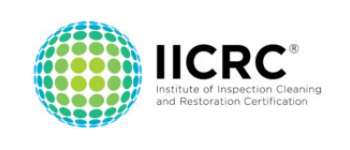How To Remove Mold Stains From Clothes
Have you ever been knocked over by the smell emanating from a pile of wet clothes? When damp clothes have been left sitting for a while, they can acquire a foul, musty smell because of the growth of mold.

Mold is a live-growing organism that’s prevalent in South Carolina and can attach to most surfaces including fabrics, causing stains and damage. The fungi can be easily identified as a patch of gray or white fungus on the surface of the fabric. Or you may see black or green spots. That’s mold that can look almost “fuzzy” or slimy. The smell of mold or mildew is strong and often rancid. Even if you can’t see any spots or growth, if an odor is present, spores are growing and treatment is needed. If it’s not removed, it can eat away at natural fibers, damaging and weakening the fabric and leaving stains.
To remove small amounts of mold or mildew from machine-washable clothes, first, take them outside to shake them out and/or brush away the spores to get rid of as much of the powdery substance as you can, making sure to brush both sides of the material. Doing this outdoors prevents spreading the spores inside your home where they can continue to grow, causing allergic reactions and breathing problems like asthma.
Here are the next steps you’ll need to take:
- Read the labels. Follow the manufacturer’s instructions concerning water temperature for washing and how the items should be dried.
- Scrub off the mold stain. Apply a mold stain remover, such as household soap, white vinegar, or bleach, then use a toothbrush to brush off the surface mold. Be gentle so as not to damage the fabric.
- Pre-soak the fabric. Since mold stains are hard to remove, you should pre-soak the garment before washing it. Soak it for one hour in an enzyme presoak product or a pail of water with one cup of white vinegar.
- Wash your clothes in hot water. Besides eliminating bacteria and allergens, hot water is also more effective in killing mold spores. (But never make it hotter than the highest recommended water temperature.) For materials that can’t be washed, take them to the dry cleaner.
-
Use one of these mold-killing solutions in the washer:
- Vinegar – Include a cup or two of vinegar per cycle along with regular detergent to eliminate moldy smells and brighten up white fabrics.
- Borax – You can also use borax in a regular washing cycle, but only with organic fabrics like cotton and linen. Dissolve half a cup of borax in hot water and add it into the machine once it has filled with water.
- Bleach – This substance can kill mold in fabrics but can also fade colors. So read the label. Some labels say, “no chlorine bleach”. For clothes that won’t be damaged, wash them with regular detergent and one cup of bleach.
- Hang-dry washed clothes in the sun. Sunlight naturally bleaches and also kills mold spores in cloth. But clothes dryer heat can make spots noticeable and hard to remove.
- If mold stains persist, repeat the whole process. You may need to dye your garment a darker color to cover the stain for good.
How to Prevent Mold on Clothes
If you don’t want to experience this, then simply don’t leave clothes in a damp pile for a few days or more. Every time you wash your clothes they should be immediately hung on a line or dried in a drier.
This also applies to clothes that have gotten sweaty. Hang sweaty clothes so they can air out. Do the same for wet swimming gear. Damp towels should also be hung up to dry once they’ve been used. If you have sweaty shoes you might want to let them air out outside on the doorstep or some other place before putting them away.
When Mold is Widespread
If you have a mold problem in your South Carolina home that goes well beyond moldy clothing due to your having experienced a serious water damage event, call in the professionals at Kingsley Water Damage & Fire Cleanup. Schedule an online appointment or call us at 803-590-0370 for a mold inspection and removal estimate.





